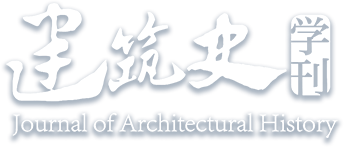Abstract:
Diancaojia, or dingceyang, is a certain technique of drawing mentioned in historical texts like Zirenzhuan and Yingzao fashi; it visually communicates how a building should be constructed. In the past, we had only six such technical drawings from the early Republican era found inside the entrance gate to Wanshouguan in Guide, Qinghai. But in August 2020, professor Wang Qiheng of Tianjin University discovered another drawing at Weiyuantai in Dongyulin village, Qiaodong district of Zhangjiakou, Hebei province. The drawing depicts Yuhuang Pavilion and may have been drawn in the mid-Ming period. This paper outlines the process of discovery and recovery research. A comparison with the related literature made it possible to identify and analyze the pictorial information contained in the seventh diancaojia drawing and to determine its approximate date of production, i.e. during the mid-Ming construction of Yuhuang Pavilion on top of Weiyuantai. This then makes that drawing the earliest physical evidence of the diancaojia technique that has survived until present.


 下载:
下载: